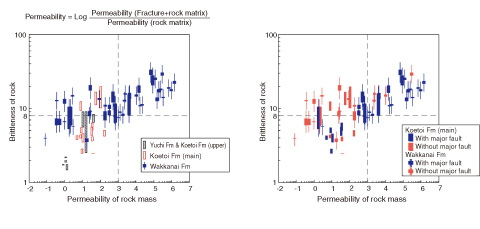
Fig.3-12 Relationship between brittleness of rock and permeability of rock mass

Fig.3-13 Distribution of brittleness of rock and permeability of rock mass based on geological map
The fracture permeability of a rock mass is an important parameter for retardation assessment of radionuclide migration and, consequently, for the design and construction of an underground facility. Therefore, the regional distribution of the fracture permeability should be understood before determining the location and layout of the facility. However, it is impossible to measure the entire fracture permeability; hence, some estimation of the permeability from the limited available data is required. In sedimentary rocks, the matrix permeability is often estimated by geophysical surveys or stratigraphic analyses, but it is difficult to estimate the fracture permeability.
The relationship between the strength and stress state of rocks and the fracture permeability was studied to develop a technique for estimating the regional fracture permeability in sedimentary rocks. Usually in the formation of fractures, a brittle deformation tends to result in high-permeability fractures, whereas a ductile deformation tends to result in low-permeability fractures. Whether the deformation is brittle or ductile depends on the strength, stress state, strain rate, and temperature at the time of the deformation. Considering the strength and stress state, a softer rock or a higher confined stress relative to the pore pressure is likely related to ductile deformation. For the depth (>300 m) at which high-level radioactive wastes are disposed of, the strengths and stress states of rocks are the most sensitive and important parameters; i.e., it is assumed that the fracture permeability is closely associated with the strengths and stress states of rocks.
Geological, hydrological, and rock mechanical tests of sedimentary rocks distributed in and around the Horonobe Underground Research Laboratory (URL) revealed that, when the brittleness of a rock is less than 8, the permeability of the rock mass is low even if fractures/faults develop (Fig.3-12: the brittleness is defined as unconfined compressive strength ÷ effective vertical stress × 2). This threshold is consistent with deformational theory assuming elastic material. The regional brittleness can be estimated using a geological map. Fig.3-13 shows the distribution of the brittleness and permeability of rock masses in and around the Horonobe URL. The relationship between the brittleness and permeability of the rock masses facilitates estimation of the regional fracture permeability in sedimentary rocks.